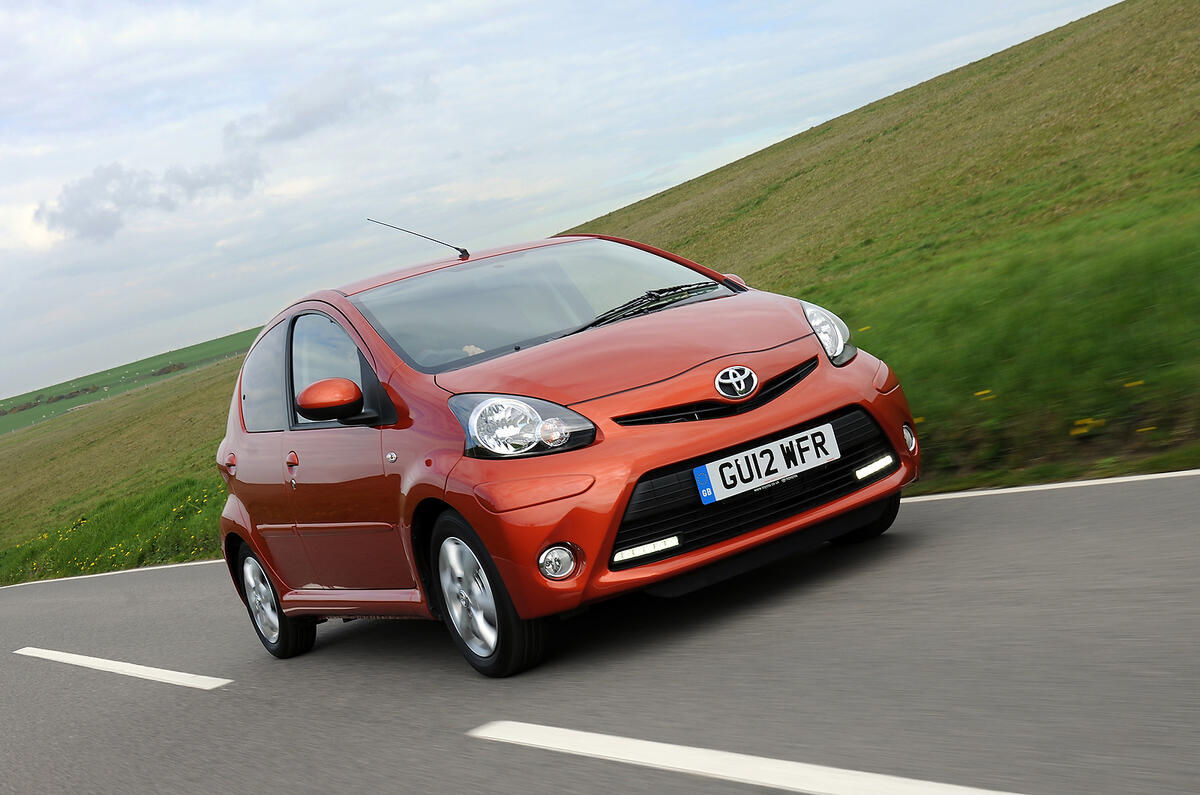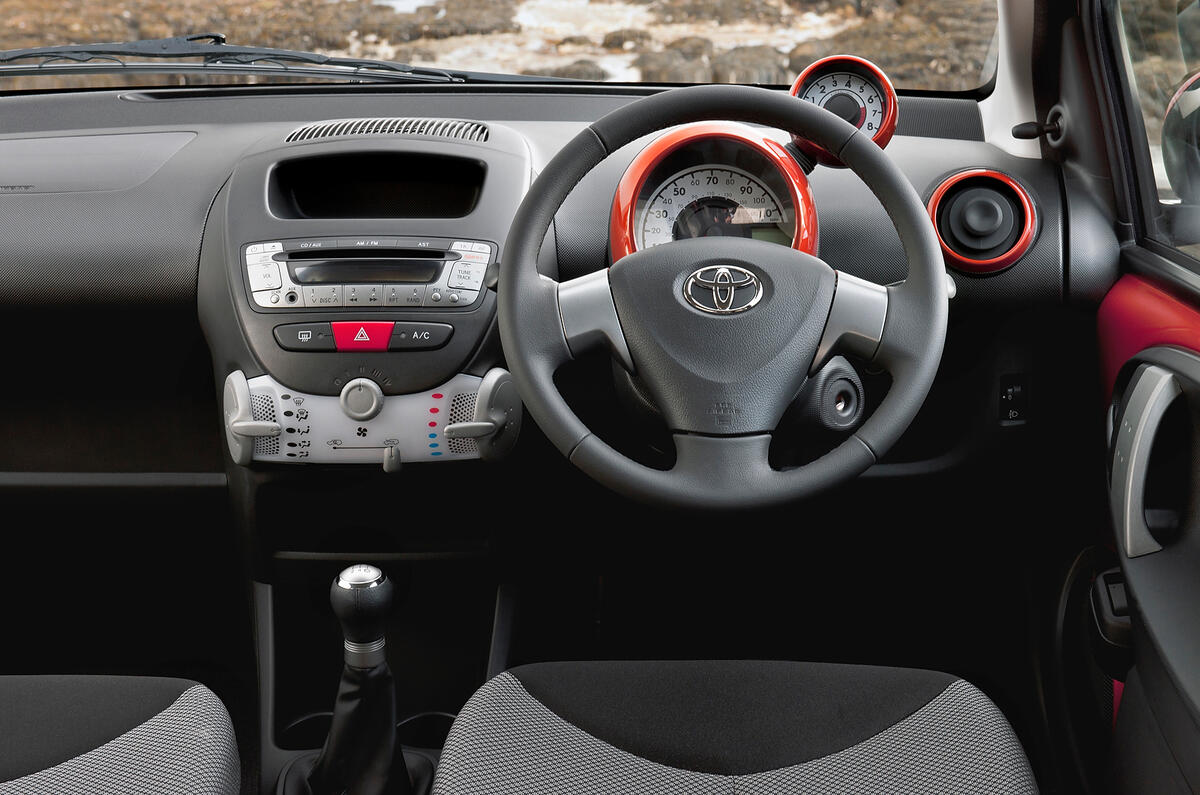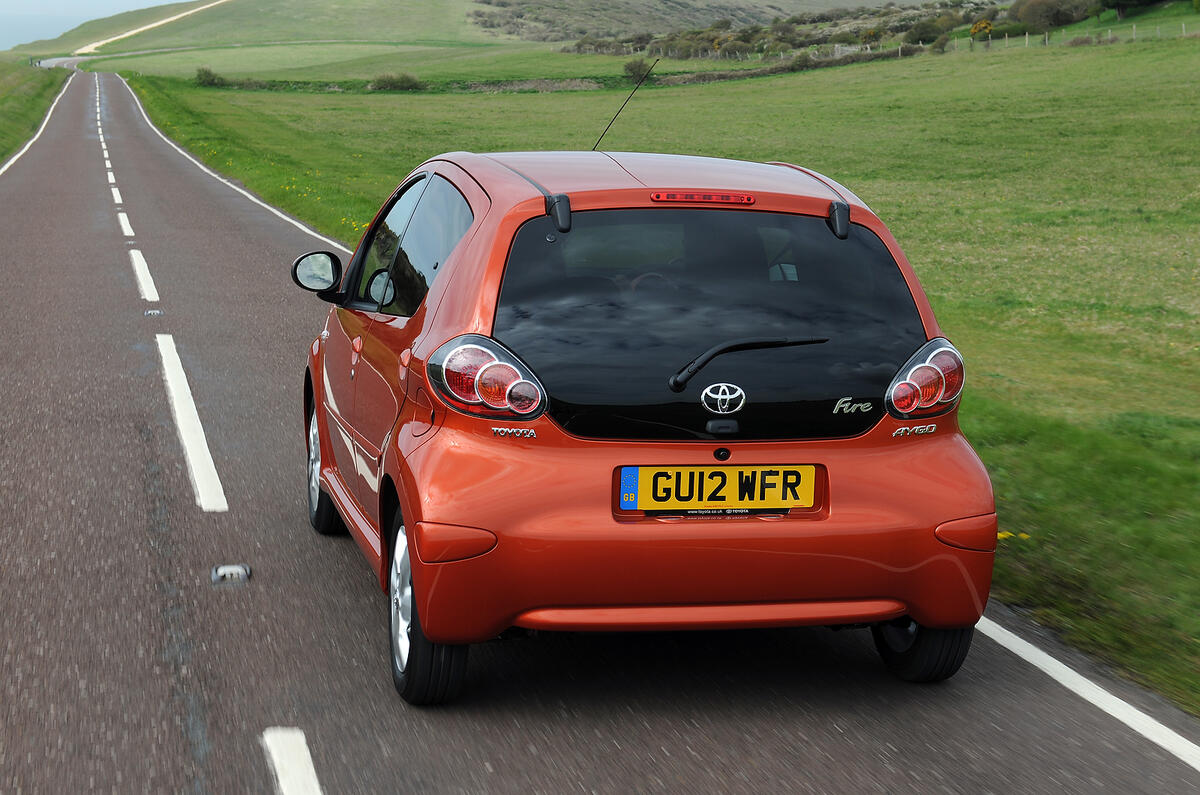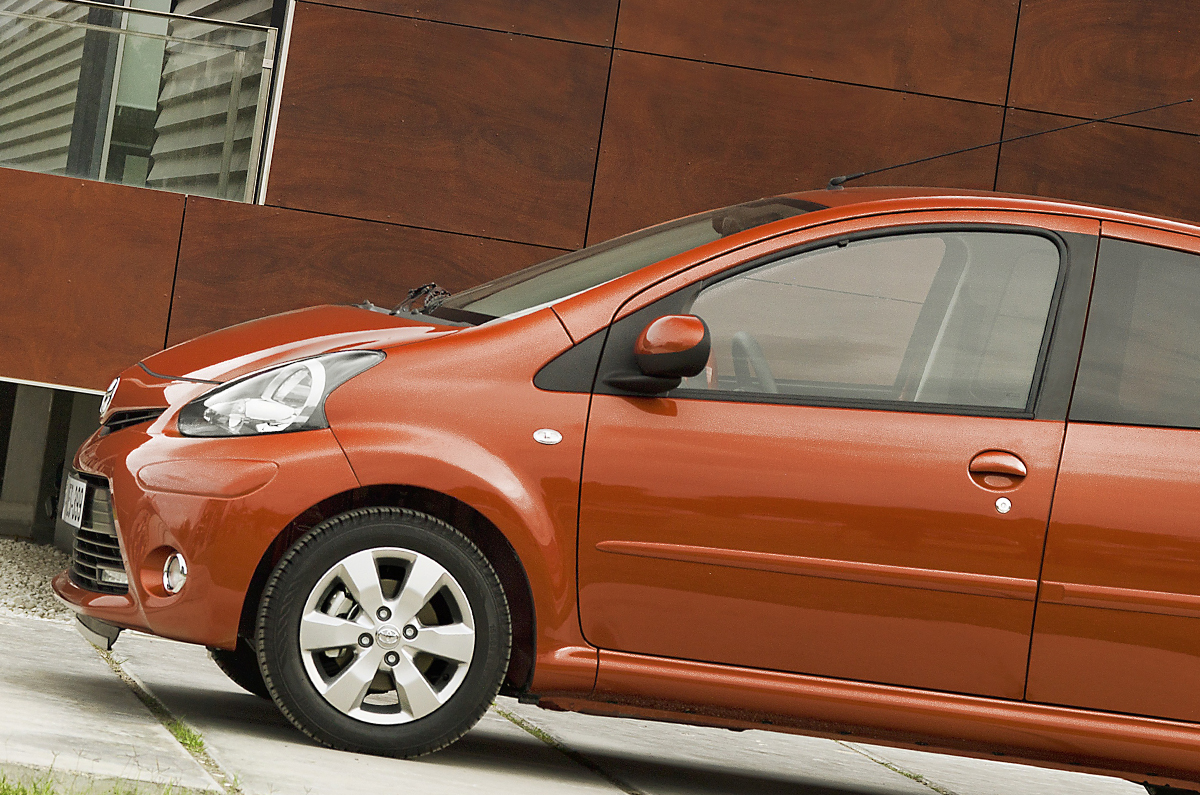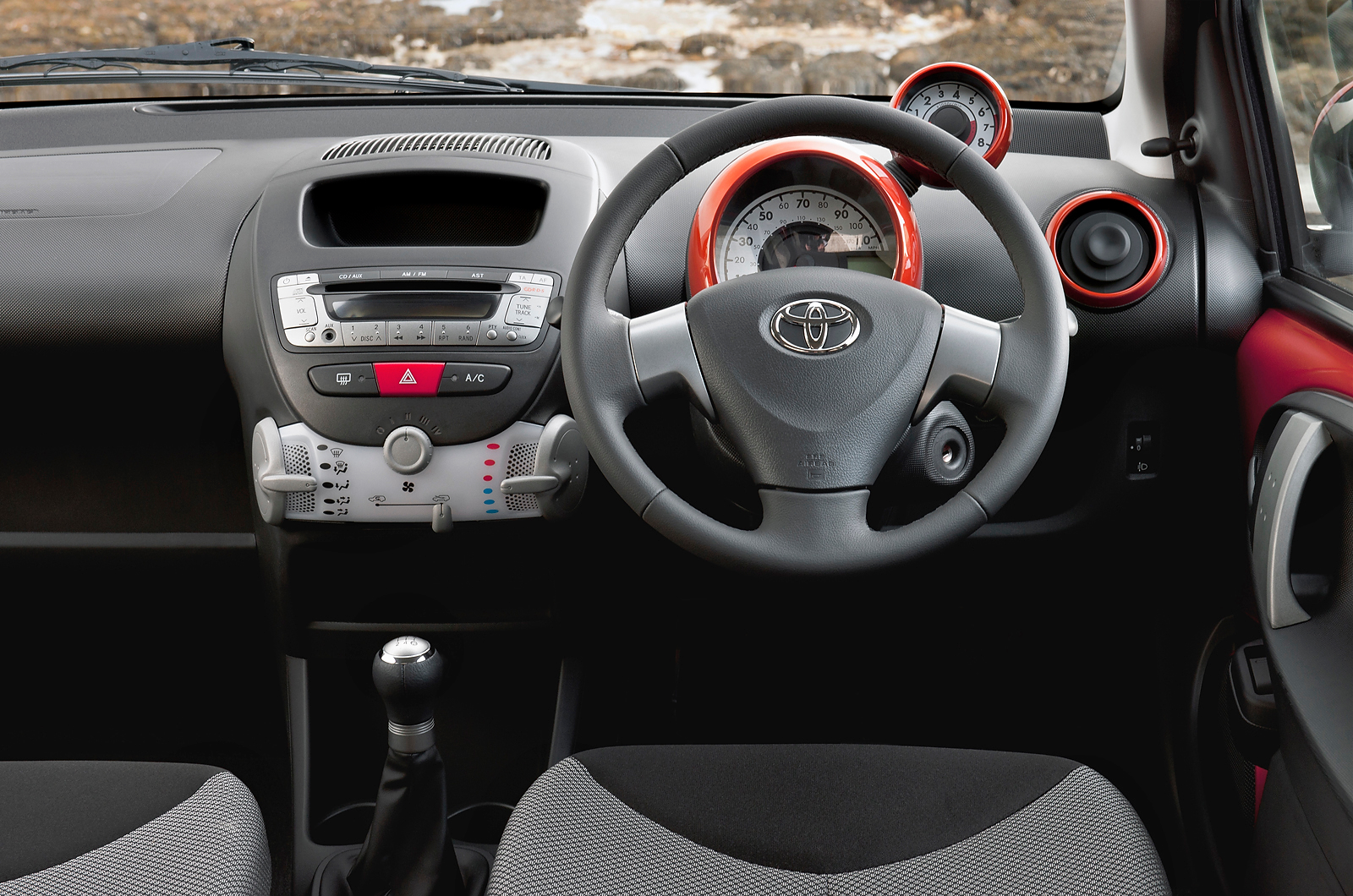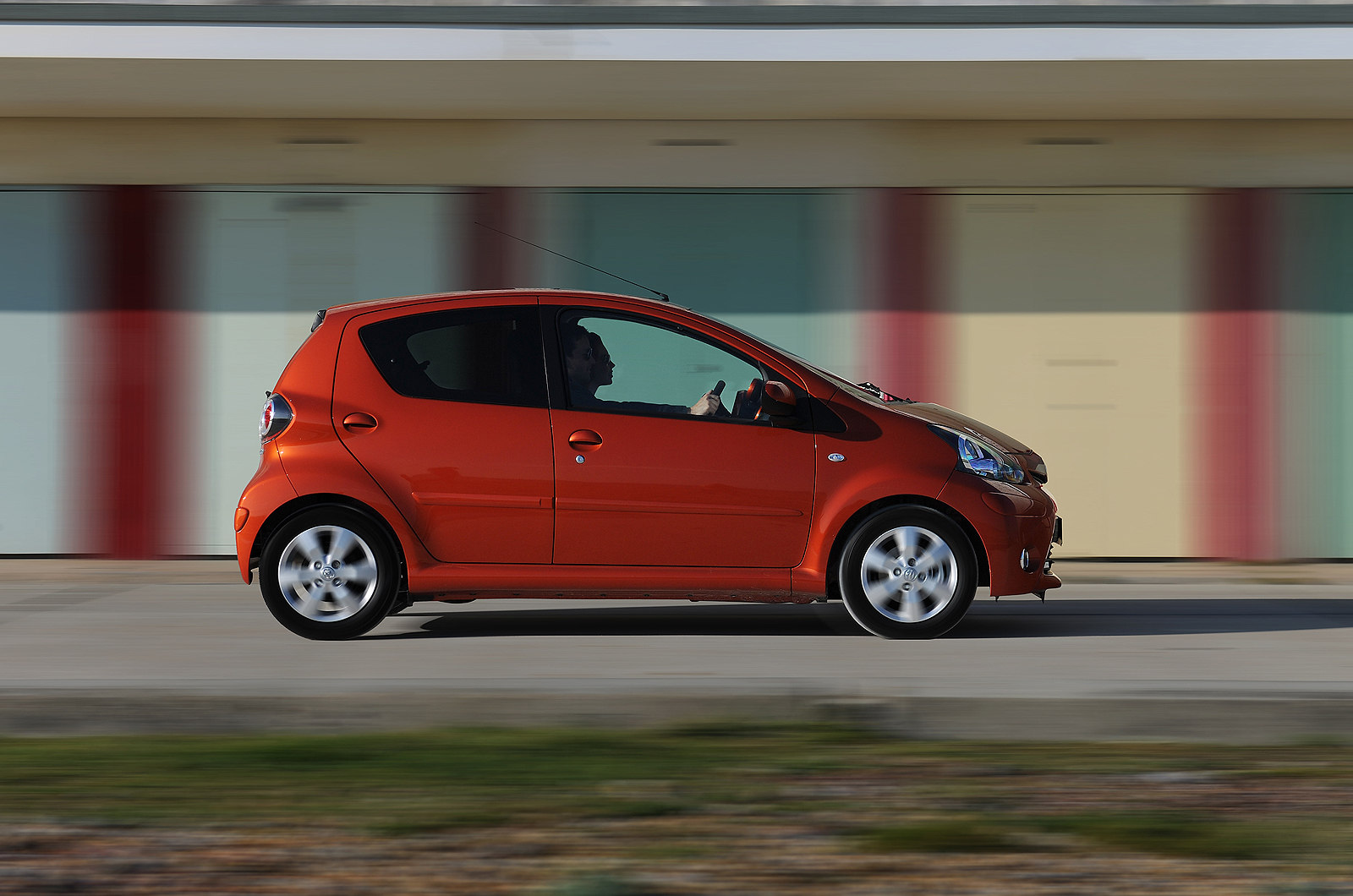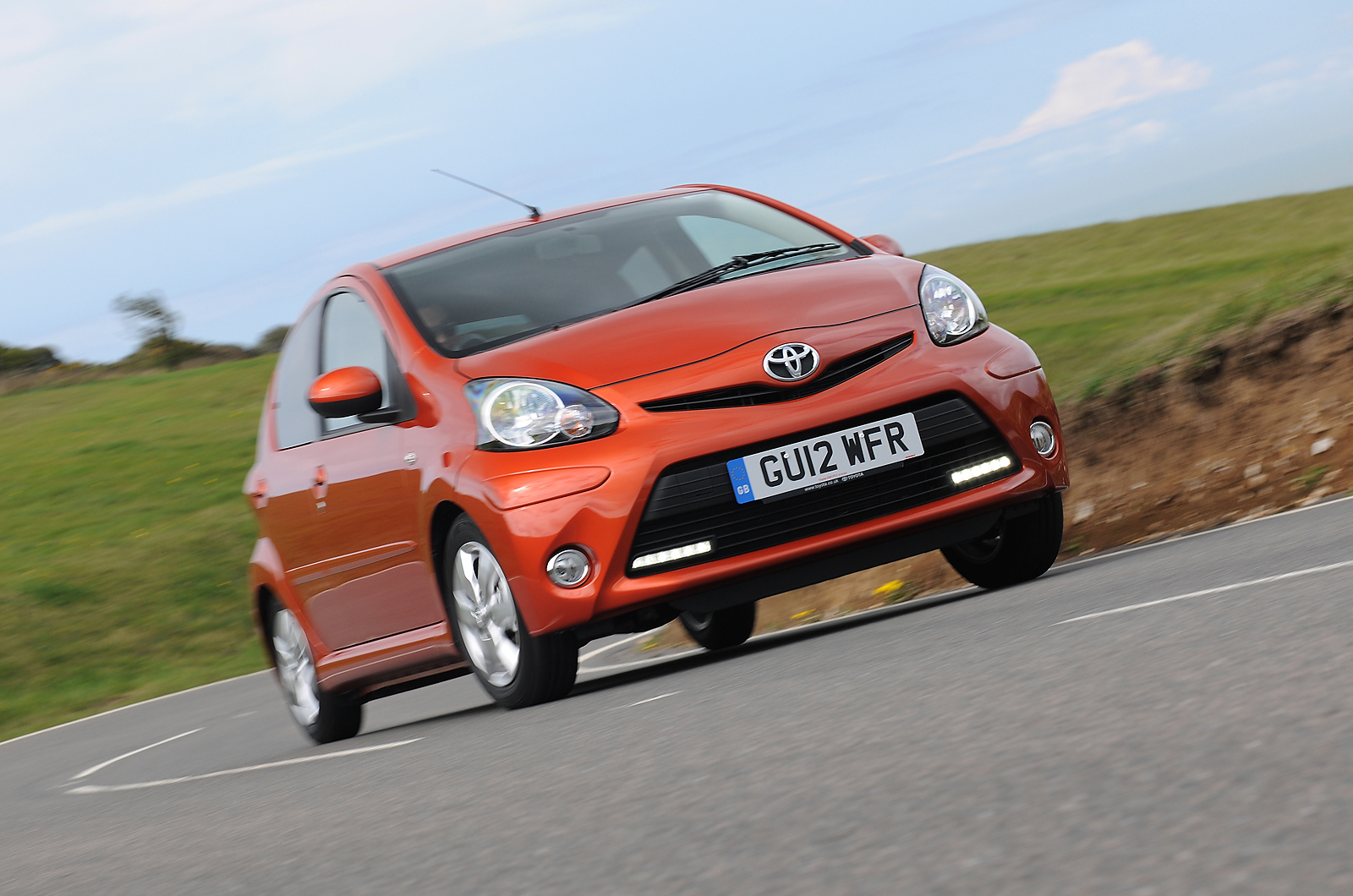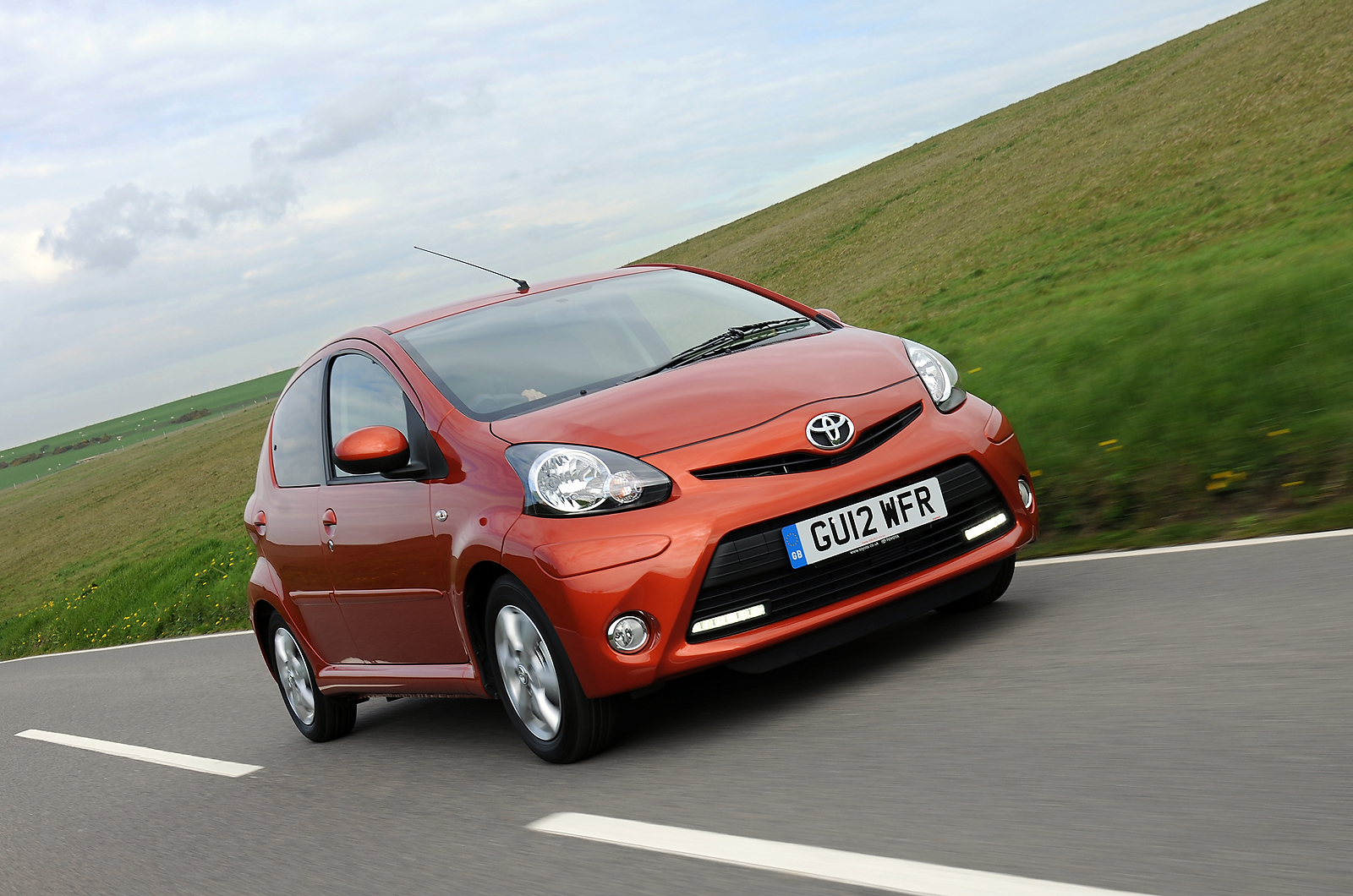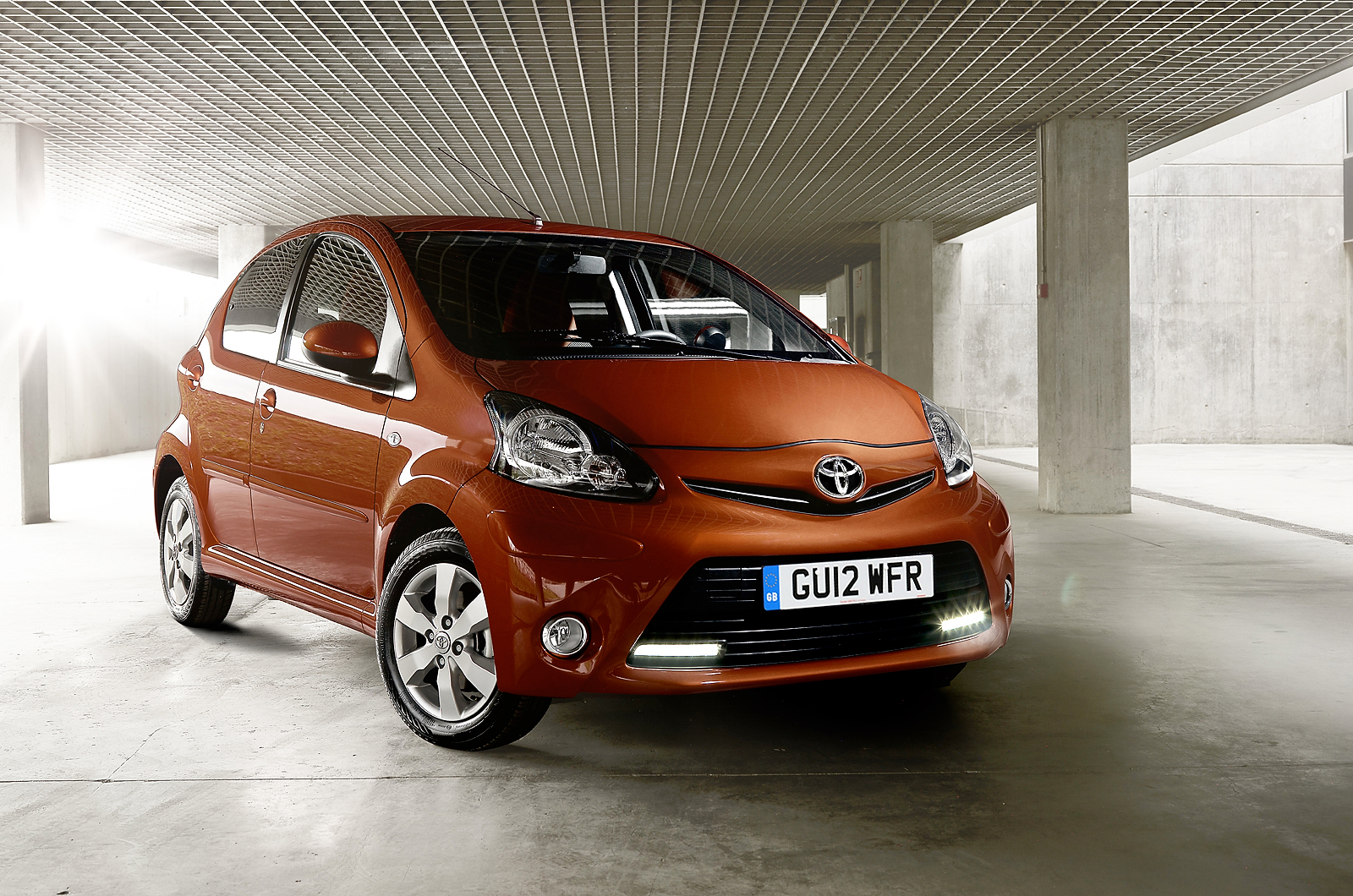As DaimlerChrysler proved with the Smart, to design and build a small car profitably, conventional engineering is the only viable option. There is nothing in the Toyota Aygo’s specification that will excite or titillate: it uses a 1.0-litre, three-cylinder engine bolted into a two-box monocoque.
The gearbox is a conventional five-speed manual and, despite offering a claimed 65.7mpg on the combined cycle, the car does so through low mass and keen aerodynamics rather than any kind of revolution in the engine bay, although Toyota has claimed that this is the lightest internal combustion engine on sale, at just 67kg. From 998cc it produces 67bhp at 6000rpm and a numerical nick more torque, 69lb ft, at a usefully relaxed 3600rpm. These figures would appear fatal for any type of enjoyment were the Aygo not a genuine featherweight, amassing just 790kg at the kerb.
Engines containing cylinders in multiples of three are among the best sounding, most enjoyable type around. Why this is the case is mainly a matter of harmonic sweet-spots, but it’s the unavoidable conclusion you arrive at the first time you prod the Aygo’s throttle and feel it shimmy. However, character counts for nothing if push-bikes pose a straight-line threat, and thankfully there’s enough performance for the car not to feel ponderous on the road. From rest it fidgets to 62mph in a 14.7sec and in fourth gear our test car just missed out on a 100mph mean maximum on the high-speed bowl, reaching 98mph. In fifth that number dropped to 95mph.
Through-the-gears pace was a touch disappointing though, with 30-70mph taking 12.7sec. Keep it spinning and the Aygo will sustain a decent lick and, from an enjoyment perspective, there’s much to be gleaned. As mentioned, much of this is simply down to the sound of the engine. Unlike some other three-cylinder units, it revs quite quickly and doesn’t suffer at the hands of a recalcitrant flywheel. Perhaps the biggest problem with the way it performs is that using all of the available 6000rpm isn’t an optional indulgence, it’s a necessity.
Gearchange quality has long been a small-car prerogative simply because the gears are small and light, and the Aygo is another great exponent of the art. Interestingly, there is very little about the Aygo that feels Toyota-generic, but the shift quality certainly has that slick, low-inertia feel we’ve come to expect from Toyota transmissions. The long, spindly lever can be yanked about with brutal speed and, again in the small car tradition, there’s a wonderful dichotomy between the subjective experience and the reality displayed on the speedometer.
Toyota offers a semi-automatic ’box called MMT (multi-mode transmission) but with the manual being this much fun, we can’t see the point in spending the extra cash required. It might be one of the few new cars still with drum rear brakes as standard, but the Aygo is so light this never becomes a problem. Pedal weight is optimised for town use, so they can feel a little over-servoed at speed. Fade is never an issue and anti-lock is standard.


